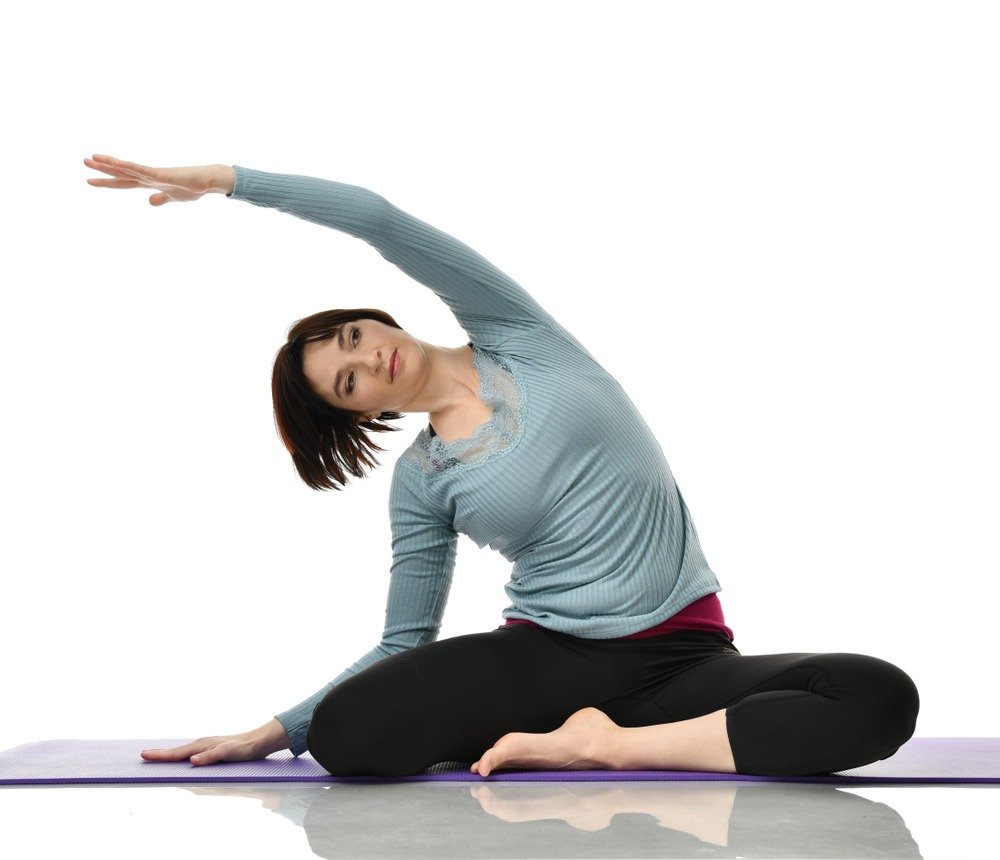Postnatal Exercise — What You Need to Know
Are you ready to lose your postpartum weight for good?
Subscribe to our newsletter for further advice on how to shed your stubborn postnatal pounds while making sustainable lifestyle changes

After the birth of your bundle of joy, it’s important to make sure you’re looking after yourself as well as your baby. Here’s everything you need to know about postnatal exercise, when to start and what to keep in mind.
Hollywood movies might make you think you’ll feel strong and invincible straight after giving birth, but for most the aftermath is pretty exhausting. You’re somehow surviving despite the sleep deprivation and the demands of your baby, and at the same your body is adjusting – though you might not entirely recognise it as being your body in the first few weeks.
It’s a cliché but it is important to listen to your body in the first few months after childbirth. And when you’re ready and feel like you want get back to normality and re-discover your spark, it’s a good time to start considering your postnatal exercise routine.
There are a number of benefits to postnatal exercise:
- By increasing endorphins into your system, exercise can elevate your mood and general well-being
- By exercising you can boost your energy levels — every little bit helps when you have a new addition to look after
- Exercise can seriously improve your strength and stamina
- If weight loss is a goal, then exercise is only going to help
- Regular movement will help to protect you from aches and pains
- Research has shown that regular postpartum exercise can help to reduce the risk of postpartum depression — something one in every 10 women will suffer from.
So if you’re feeling ready to reach for your leggings again, we have some expert advice for you at the Louise Parker Method. We have helped hundreds of postnatal mothers over the past decade from school-run heroes to Hollywood stars and working mums to royalty to reclaim their pre-pregnancy bodies, and we’re here to arm you with the expert information you need.
Remember at all times to keep in mind the four pillars of the Louise Parker Method — Think Successfully, Live Well, Workout Intelligently and Eat Beautifully.
When to Start Postnatal Exercise
Hold off for at least six weeks post-birth before you begin your post-natal exercise routine and longer if you had a C-section. After all, post-childbirth, your body needs time to return to its normal anatomy and physiology whilst your uterus shrinks back into its pre-pregnancy location. Your body has been through a lot, and even if you feel normal, it’s important to remember that doing too much early on can do more harm than good.
If you had a cesarean section, you might need even longer before you can start your postnatal exercise routine. To ensure you’re in the clear, get the sign-off from your GP at your six-week appointment before starting a serious fitness regime.
Even once you’ve had the medical go-ahead, be mindful of the messages your body is sending when you begin your workout. If you experience symptoms such as headaches, excessive soreness or heavy bleeding, stop immediately and call your doctor for advice.
What Is the Best Postnatal Exercise?
There are a number of postnatal exercises that are immediately beneficial for your recovering body. These include:
Kegels — Pelvic floor exercises are one of the most important exercises you can do following the birth of your baby and you can start them immediately. Kegels will help to tone your bladder muscles and reduce risk of incontinence after childbirth.
Squats — Though Kegels are great for your pelvic floor, some women prefer squats. Squats can engage the gluteal muscles, which coordinate with the pelvic floor muscles. Squats have the added benefit of improving flexibility, mobility and balance.
Yoga — When you’re pregnant, your body produces a lot of the hormone Relaxin. This hormone is responsible for (as the name suggests) relaxing your ligaments and joints, to facilitate childbirth. This hormone can remain in your system six months postpartum, leading to unstable joints. As such, exercises with jerky movements aren’t always right for postpartum women. A lot of women find yoga to be a great postpartum exercise, as it encourages relaxation, strengthens core muscles and prevents back pain. Keep an eye out for a specialist post-natal class and always make sure your teacher is aware of your background before starting.
Swimming — Swimming is a great low-intensity cardiovascular exercise that works your lungs and gets your heart pumping without putting too much stress and strain on your joints. Swimming can also improve muscle tone for postpartum women.
Brisk walking — Don’t discount the value and benefit of light aerobic exercise such as a walking. Walks can be highly effective, especially for women who have not had a strenuous exercise regime for a while. It’s also an exercise you can do with your baby in tow. Not only will walking help to shift body fat, but it will always boost your mood. Try and walk on a daily basis, even if it’s just round the block, at a pace that is reasonably challenging, but don’t over do it – you have to take it easy and many women won’t be up to this for many weeks – work at your own pace
Simple Post-Natal Exercise Routine
Once you get the go-ahead from your doctor, here is a simple, no-nonsense routine you can follow to get yourself prepared for more physical activity down the road. Complete as many repetitions as you can for 60 seconds.
- Glute bridge (option glute bridge with arm raise)
- Clams (option clams with elevation)
- Static lunges, option walking lunges
- Pelvic tilt (option 1 – C curve), (option 2 – roll downs)
- Deadbugs, option deadbugs with arm raise
- Press with leg extension
You may notice some of the most common exercises missing from this list- for good reason. Take for example crunches, as much as you might pine for a flat stomach, doing crunches before your diastasis recti – the split in the stomach muscles that occurs during pregnancy – has closed (which usually happens around six weeks) could make the gap even bigger so avoid this exercise. You also want to steer clear of high impact exercise such as running until 12 weeks after the birth to avoid injury.
Postnatal Exercise Recommendations (What to Remember)
When starting your postpartum exercise programme, you need to keep in mind the following:
- Everyone is different and is capable of advancing at different rates. Listen to your body so you can rehab properly.
- Be realistic and patient. It took you forty weeks to get to this point, so it could take as long to shed the weight you gained. Your body will still be recovering so give yourself time to enjoy your newborn without giving into the pressure to bounce back into shape straight away.
- Pushing yourself too hard at the start can set you back in the long run.
- If you decide to breastfeed, put weight loss out of your mind until you’ve either stopped breast-feeding or are reducing the amount your breastfeed. Losing weight means dropping into a calorie deficit and if you do this whilst breastfeeding, there’s a good chance your milk flow will be affected or even stop before you start to lose a pound. This doesn’t mean you can’t exercise – train to boost your mood and fitness levels, help your body recover and strengthen, and focus on weight loss when you are ready to.
- Stay hydrated at all times — this is especially important if you are breastfeeding.
We support our clients with Fertility, Ante- and Post-Natal programmes with expert care from conception to Christening and so we’re able to monitor you closely with expert advice for you and your baby. We help remove many of the concern mothers can have with continual expert support throughout.
Are you ready to lose your postpartum weight for good? The Louise Parker Method will help you shed your stubborn postnatal pounds while making sustainable lifestyle changes that will transform your body. Request a call today to start your journey to a healthier, happier you.
& More
Receive 10 free recipes to your inbox!
Sign up and we will send you 10 free recipes





